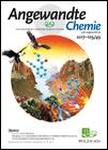版权所有:内蒙古大学图书馆 技术提供:维普资讯• 智图
内蒙古自治区呼和浩特市赛罕区大学西街235号 邮编: 010021

作者机构:Department of Chemical Engineering Columbia University 821 Mudd Building New York NY 10027 USA School of Advanced Materials Peking University Shenzhen Graduate School Peking University Shenzhen Guangdong Province 518055 China State Key Laboratory of Complex Nonferrous Metal Resources Clean Utilization/Faculty of Metallurgical and Energy Engineering Kunming University of Science and Technology Kunming Yunnan Province 650093 China Chemistry Division Brookhaven National Laboratory Building 555 Upton NY 11973 USA Center for Functional Nanomaterials Brookhaven National Laboratory Upton NY 11973 USA
出 版 物:《Angewandte Chemie》
年 卷 期:2020年第132卷第28期
学科分类:081704[工学-应用化学] 08[工学] 0817[工学-化学工程与技术]
主 题:carbon dioxide reduction reaction density functional theory interfacial energy metal nitrides palladium hydride
摘 要:The electrochemical carbon dioxide reduction reaction (CO 2 RR) to produce synthesis gas (syngas) with tunable CO/H 2 ratios has been studied by supporting Pd catalysts on transition metal nitride (TMN) substrates. Combining experimental measurements and density functional theory (DFT) calculations, Pd‐modified niobium nitride (Pd/NbN) is found to generate much higher CO and H 2 partial current densities and greater CO Faradaic efficiency than Pd‐modified vanadium nitride (Pd/VN) and commercial Pd/C catalysts. In‐situ X‐ray diffraction identifies the formation of PdH in Pd/NbN and Pd/C under CO 2 RR conditions, whereas the Pd in Pd/VN is not fully transformed into the active PdH phase. DFT calculations show that the stabilized *HOCO and weakened *CO intermediates on PdH/NbN are critical to achieving higher CO 2 RR activity. This work suggests that NbN is a promising substrate to modify Pd, resulting in an enhanced electrochemical conversion of CO 2 to syngas with a potential reduction in precious metal loading.